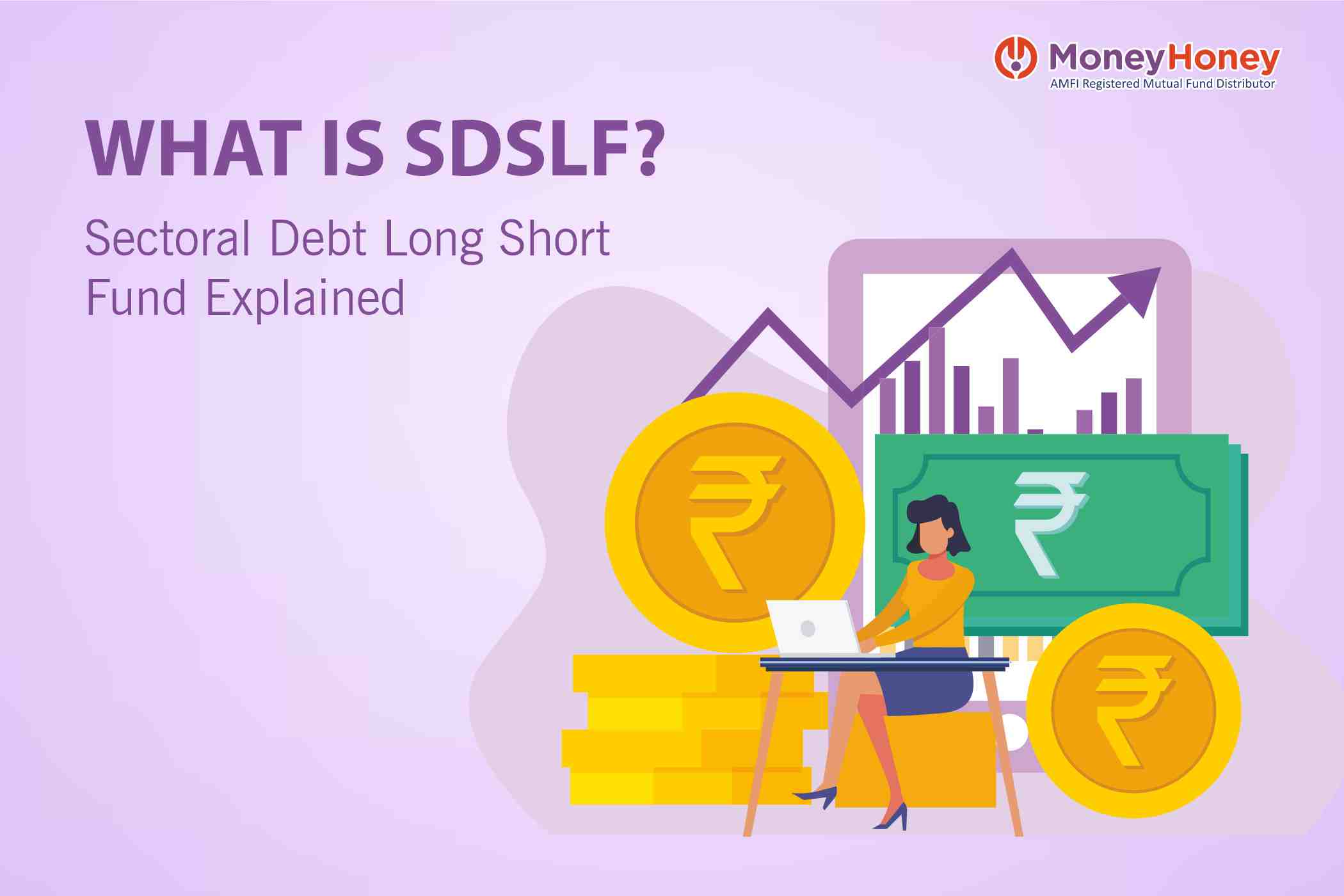Introduction to Sectoral Debt Long Short Fund (SDSLF)
Fixed-income investors keep looking for diversification beyond the traditional investment avenues such as bank fixed deposits and bonds. Most of them find it difficult to identify opportunities and in many cases access is limited due to very high-ticket size, as issuers may want to go for private placement.
However, there is an opportunity for such discerning investors – sectoral debt long short fund (SDLSF) – a type of specialised investment fund (SIF). Let’s understand how this strategy can work for a fixed income investor.
Understanding How SDSLF Works
An SDSLF is akin to a sectoral debt fund. We have already seen debt mutual fund schemes investing in bond instruments issued by companies in a particular sector. For example, debt mutual fund schemes tracking CRISIL-IBX Financial Services 3-6 months debt index. Or actively managed Banking & PSU Debt funds. However, SDSLF goes farther and it is expected to offer a differentiated investment experience.
A fund manager of SDSLF should be investing in debt instruments issued by at least two sectors.Exposure to one sector should not be more than 75% of the assets of the scheme. The realdifferentiator comes in the form of ability to short sell. A fund manager can short sell bonds ofcompanies up to 25% using derivative instruments. The short exposure must be across all theinstruments of issuers coming from that sector held in the portfolio. For example, if a fund managershort sells bonds of a shipping company, then she cannot go long on a bond of another shippingcompany. All positions, in that case, on shipping bonds must be short.
What is Short Selling in SDSLF?
For beginners, short selling is an act of selling a security that one does not own, with an intention to buy it back when the price of the security declines. Short selling can be done using derivative instruments and if the stock price indeed falls after selling the security short, the short seller makes money by buying it at a lower rate.
Investment Approach and Benefits of SDSLF
SDSLF should enable a fund manager to focus on bonds from a particular sector and build a portfolio as per her conviction. The fund manager can also optimise returns by selling bonds short, where she expects the fundamentals to worsen. A good part is there is no equity market exposure making it a relatively less volatile product suitable for a relatively less risk-taking investor.
Risk-Reward Advantage of SDSLF Strategy
Since SDSLF can go short on bonds, it can benefit from a possible downgrade in credit rating as well as possible downward movement in bond prices due to a sudden increase in bond yield. SDSLF should generate better risk adjusted returns compared to an average sectoral debt fund or a fixed income portfolio over the medium term.
Taxation Benefits and Long-Term Compounding
Similar to gains booked on debt mutual funds and interest receipts, the gains booked on the sale of units of SDSLF will be added to income of the investor and taxed at the slab rate. Like debt mutual funds, the tax liability on gains in SDSLF materialises only when an investor sells her units. This helps investor to postpone her tax liability. If an investor sells her units in SDSLF in lean income years or after retirement, then her tax liability may stand reduced. Holding units of SDSLF for a very long term can help investors compound money without worrying about taxes.
Investment Threshold and Accessibility
Another advantage of SDSLF is, a relatively low minimum investment threshold of Rs 10 lakh compared to Rs 50 lakh for portfolio management service and Rs 1 crore for alternative investment fund. This makes the strategy accessible for even mass affluent investors and they can keep adding to their investments over medium to long term.
Risks to Consider Before Investing in SDSLF
Though SDSLF is attractive, investors must also be aware of the risks such as default risk and interest rate risk. If an issuer of a bond held in the portfolio defaults on the interest or capital repayment as per agreed terms, then the investor’s capital is at risk. If interest rates go up, then the prices of the bonds fall and the investors may see erosion in net asset value of the scheme.
Investor Due Diligence and Suitability
Investors should look at the portfolio of the SDSLF to assess the credit quality of their portfolios. Investors must also keep a tab on expenses charged on the scheme. Relatively higher expenses can eat into portfolio returns. Being a focused sectoral offering, it suits slightly evolved investors with a medium to long term investment view.
Disclaimer: This report is prepared in his personal capacity and neither the Author nor Money Honey Financial Services Pvt Ltd assumes any responsibility or liability for any error or omission in the content of the article. Investments in mutual funds and other risky assets are subject to market risks. Please seek advice from an investment professional before investing.



